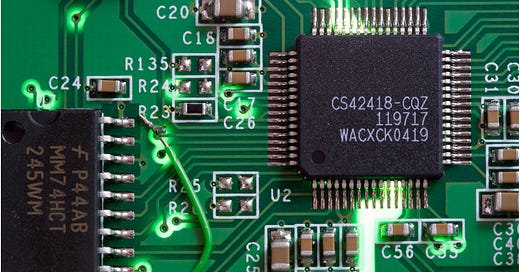Good morning! Hello to new readers, and welcome to the latest edition of the Vietnam Weekly, written by Ho Chi Minh City-based reporter Mike Tatarski. Today’s newsletter is exclusively for paying subscribers - next week, I’ll publish another one on the much-anticipated new Land Law and its potential impact on the moribund real estate sector.
If you haven’t already, you can upgrade to a paid subscription to receive all weekly subscriber-only posts and access the archive dating back to mid-2018 for US$8/month or US$90/year. Group subscriptions are available at a 20% discount per reader.
On to the news.
Last month, I wrote about Vietnam’s growing focus on semiconductors after Nvidia CEO Jensen Huang’s high-profile visit to Hanoi.
The topic is worth revisiting already.
As mentioned last Friday, Prime Minister Phạm Minh Chính attended the World Economic Forum in Davos, followed by state visits to Hungary and Romania. The trip was, according to state media, “successful in all aspects.”
At each stop, Chính pitched Vietnam’s investment bona fides, namely economic stability, controlled inflation, and ongoing GDP growth despite macro headwinds.
In Davos, he led a meeting organized by the Vietnamese embassy, the Ministry of Planning and Investment, and FPT Group. Attendees reportedly included representatives from Google, Mitsubishi Heavy Industries, Qualcomm, and Siemens, among others.
The focus was semiconductors, AI, and the auto industry - I’m only going to cover the first two today.
Chính guaranteed government support for investors in these fields while noting that the government views semiconductors as a driving force for development, with VnExpress quoting him as saying:
“To develop these fields, Vietnam will promote three strategic breakthroughs: strategic infrastructure, training high-quality human resources and perfecting institutions."
We’ll get to each of those below, but I want to start with some semiconductor history.



